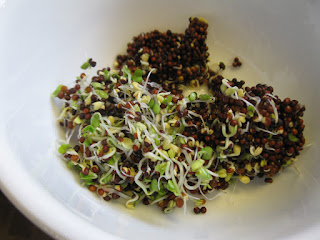This is a re-post. (?) It's that time of year again, and if you have a nice coat or jacket that needs a new zipper, help is at hand!
Replacing a Zipper in a coat/jacket
Here you can see a perfectly good jacket. The problem is, the zipper is
broken! Replacing a zipper is really not difficult, but it is tedious
and takes considerable time. If your coat/jacket is nice, and/or you
love it, it is more than worth the trouble to replace the zipper.

Here is the zipper I ordered over the internet
here. This company is wonderful. They have
everything and excellent customer service!

A closer look at the invoice:

The
zipper I purchased cost $6.03 including the shipping, and so for a nice
coat, you can see that this would really be worthwhile.
Now, don't be afraid. Breath. Relax. Here we go.
FIRST ~ set your sewing machine to its
longest
stitch length. Sew a line of stitching along the jacket opening, far
enough in from the edge that you do NOT catch in the existing zipper.
This is to hold everything together nicely and make the reassembly
easier. Do this on both sides of the jacket.

Here I am doing the same thing on the other side:

SECOND ~ take your little seam ripper and do (carefully and don't stab yourself) whatever it takes to remove the broken zipper:

Here I've gone a little farther in the process:

Here I am removing some stitching from the surface:

And
here is what it looks like with the zipper removed. Now you will see
the wisdom of doing that basting line of stitches so the jacket doesn't
blow up and get all weird.

THIRD ~ carefully remove all the bits of loose thread:
FOURTH
~ Thread a sturdy hand sewing needle with a doubled thread and run it
through some beeswax so it will be less likely to tangle while you are
sewing. Rosin will work instead of the beeswax, too, or if you have
neither, find a piece of candle or even hand soap to use!

FIFTH
~ I hope you took the time to observe how the old zipper was
positioned. You are going to unzip the new zipper, and one side at a
time, you will put the
new zipper in, and pin it in place and then hand baste it in place:

See? Here is one side basted together:

And here is the other side:

Oh, yes, and it is very helpful to have a fuzzy cat walking around under your work table at this point:

SIXTH ~ Before you sew the zipper in with your machine, zip up the jacket to make sure it is going to work!

SEVENTH ~ Now, simply, using a normal stitch length, sew along the same line where the old zipper was sewn in like this:

Make sure to replace any seams or stitching you have removed:

Be sure to remove any basting stitches. On this one, there was the
nice little tab on the old zipper, so I just transferred it to the new
one:

That's all you need to do! Even if it doesn't turn out perfectly, it is better than throwing away a perfectly good coat.
Please feel free to ask questions if I can help.
Linked to
Clever Chicks Blog Hop!




























































